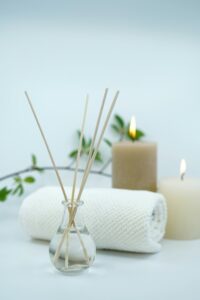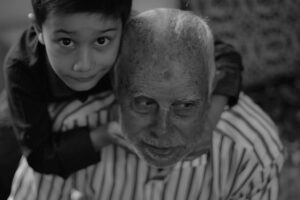Oh, the stress of parenting. Life in general can be challenging but being a parent makes it exponentially more so. There are many things you can do to decrease your stress levels, fortunately. Some of them are lifestyle things, therapy is another, medication can help as well. And among the medications, there are more natural options such as CBD. Read on to find out about how it can help stressed parents.

From the moment we wake up – often to the shriek of a toddler or the slam of a teenager’s door – to the last load of laundry we fold at night, we are rarely afforded stillness. And while society urges us to “just take care of yourself,” that’s easier said than done when self-care comes with a price tag, a waitlist, or a babysitter you can’t afford.
So when I found myself edging toward burnout – mentally foggy, sleep-deprived, and more reactive than I’d like to admit – I did something I never thought I’d do as a parent: I tried CBD.
Not in a flashy, influencer way. I wasn’t sipping lavender CBD lattes or rubbing it on my chakras. I bought a small bottle of hemp-derived tincture from a local health shop, tucked it behind the baby thermometer, and hoped for the best.
Now, three years later, I can say this with confidence: every stressed-out parent deserves to know what CBD is, what it isn’t, and how it might quietly, affordably, help them breathe again.
What Is CBD, Really?
Cannabidiol – CBD for short – is one of over a hundred naturally occurring cannabinoids found in the cannabis plant. But unlike THC, the compound most famously responsible for cannabis’s psychoactive effects, CBD doesn’t get you high. Instead, it’s known for its calming, anti-inflammatory, and anxiolytic properties – effects that have made it a go-to option for stressed-out parents, chronic pain sufferers, and even pets.
Here’s the science in plain English: CBD works by interacting with the body’s endocannabinoid system (ECS), a vast network of receptors that helps regulate mood, stress, sleep, immune response, and more. Unlike THC, CBD doesn’t bind directly to the CB1 receptors in the brain, which is why it doesn’t induce euphoria or alter your state of consciousness.
Most of the CBD products you’ll find on the market – especially in the U.S. – are hemp-derived, containing less than 0.3% THC to comply with federal law. These come in oils, tinctures, gummies, capsules, and even bath salts. But there’s another route gaining traction among more experienced cannabis users: high-CBD flower.
Strains like CBD Charlotte’s Angel by Dutch Passion are game-changers for people like me – those who enjoy the ritual of smoking or vaporizing but want the soothing benefits of cannabis without the intoxication. Charlotte’s Angel clocks in with CBD levels around 10–16% and less than 1% THC, offering a deeply relaxing experience that won’t interfere with your parenting responsibilities. No mental fog. No munchies. Just gentle relief.
Other well-known CBD-rich strains include ACDC, Harlequin, and Ringo’s Gift. These cultivars are often used for anxiety management, pain relief, and even seizure control in some medical cases. And because they’re cannabis – not industrial hemp – they offer a fuller spectrum of cannabinoids and terpenes that may enhance therapeutic effects via the “entourage effect.”
For parents who prefer not to smoke, these strains can also be used to infuse oils, salves, or edibles at home – a highly customizable and budget-conscious alternative.
Why Parents Are Turning to CBD
We’re living in what many psychologists are calling a mental health crisis – especially among caregivers. A 2023 report from the American Psychological Association found that 74% of parents reported high levels of stress due to balancing parenting demands, financial strain, and emotional burnout.
CBD, while not a cure-all, has emerged as a natural option for parents seeking relief without turning to prescriptions or nightly glasses of wine. Multiple studies suggest CBD may reduce anxiety by interacting with serotonin receptors in the brain. A 2019 clinical case series published in The Permanente Journal found that 79% of participants experienced reduced anxiety within the first month of CBD use, and 66% saw improved sleep scores.
Personally, I noticed something more subtle: the space between stimulus and response widened. The toddler tantrum still happened, but I didn’t snap. The kitchen still looked like a war zone, but I didn’t spiral. I felt calm, but not sedated. Present, but not overwhelmed.
How to Start (and Not Get Overwhelmed)
For parents dipping their toes into CBD, the sheer variety can be overwhelming. There are oils, capsules, edibles, topicals, even bath bombs. I started with a full-spectrum oil, taken sublingually (under the tongue), and stuck to a low dose – about 10mg per evening. That’s often all you need to begin noticing effects.
Full-spectrum products contain a wide range of cannabinoids and terpenes and are believed to offer better results than CBD isolates. Broad-spectrum products contain everything but THC, while isolates are pure CBD. Each has its place, but if your stress levels are high and your tolerance is low, starting with full-spectrum or broad-spectrum at low doses is usually a safe bet.
Can CBD Fit Into a Frugal Lifestyle?
One of the reasons I avoided CBD for so long was cost. Some brands sell tinctures for over $100 a bottle, which is out of reach for many single-income families. But good CBD doesn’t have to be expensive – especially if you know where to look.
Sites like ProjectCBD offer consumer education and guidance on safe, reasonably priced products. Look for companies that provide third-party lab tests for potency and purity. Stick with full-spectrum when possible, and avoid brands with vague ingredients or celebrity marketing.
Some reputable companies offer low-income discounts, and if you’re more DIY-inclined, consider making your own CBD oil using legal hemp flower and MCT or coconut oil. You can decarb and infuse it yourself at home with a slow cooker and a cheesecloth – saving money and customizing your strength.
Talking to Your Kids (and Maybe Your Partner) About CBD
One unexpected challenge was talking to my kids – and my partner – about CBD. There’s still a stigma around cannabis, and for many families, that means hiding wellness routines like they’re dirty secrets. But the truth is, transparency builds trust.
When my son found the bottle on the bathroom shelf, I told him the truth: “It helps me stay calm when I’m feeling overwhelmed. Kind of like how you breathe deep when you’re nervous, or drink water when you’re tired.”
If you’re open about what CBD is and what it isn’t, you turn it into a teachable moment – not a mystery. And if you have a partner who’s skeptical, sharing the science (and maybe a gummy or two) can shift the conversation from suspicion to curiosity.
In the End, It’s About Showing Up – Calmer
CBD won’t raise your kids for you. It won’t stop the meltdowns or fill out the field trip forms you forgot about (again). But it might help you do those things without gritting your teeth.
In a culture that glorifies hustle and martyrdom, finding a moment of calm is radical. And when you can find it without compromising your clarity, your budget, or your sense of self? That’s more than wellness. That’s survival – with grace.



